#patiria miniata
Explore tagged Tumblr posts
Text

Bat Star (Patiria miniata) at Moss Cove beach in Laguna Beach. We just completed a few days of low-tide (during daylight), but next month starting around Nov. 14, it will also be a good time for tide-pooling in SoCal. Double check your local tide charts to be sure! Anything under 2 ft is pretty good for observing tide pools
#Patiria miniata#bat star#starfish#ocean#laguna beach#moss cove#moss street#socal#beach#tide pools#tide pool#low tide#california
31 notes
·
View notes
Text

Nervous system of a juvenile sea star (Patiria miniata) about 1 cm wide. Labeled with an antibody against acetylated tubulin after optical clearing, and captured using a color-coded Z-projection.
By Laurent Formery (USA).
Light Microscopy Awards
#laurent formery#photographer#united states#light microscopy awards#micro photography#juvenile sea star#patiria miniata#nature
100 notes
·
View notes
Text

[ID: a digital illustration of a wide orange starfish surrounded by stylized purple sea urchins, water, sand, and stone. End]
#00192 BAT STAR
Patiria miniata
PHYLUM ECHINODERMATA, CLASS ASTEROIDEA
An intertidal starfish found along the Pacific coast from Alaska to Mexico. It eats both living plants and animals as well as dead detritus - it secretes digestive juices to liquefy food sources before ingesting them.
#copypasting from a creature club document. idk if I’ll keep up w that formatting but might be nice ? :-)#bat star#starfish#sea star#marine life#echinoderms#invertebrate
184 notes
·
View notes
Text
Pets I think arcane characters would have
Includes- Mel, Caitlyn, Viktor, Jinx, Vi, Sevika, Ekko and Silco
this is set in season one, sorry if I got anything wrong, I hope you enjoyyyy!!!!

Mel
- Mel would have a tabby maine coon cat named Diantha.
- Daintha would be a very cuddly cat, quite lazy and spends most its time sleeping in the most random places, but loves outdoors and gets spoiled ROTTEN.
-That cat gets everything she meows for, Mel gives her those cat vitamins what makes her coat nice and soft, she also has a specific time each night when Mel gets home from work and she brushed Diantha.

Caitlyn
- It’s not a household pet, but Caitlyn would own a horse, a fresian named Domino, her father named it.
- Domino was a dressage horse, Caitlyn got him as a birthday present when she was younger, her parents would make her go to the stables every weekend to muck him out and take riding lessons
- Once Caitlyn was riding domino and kicked her off, after that Cassandra wasn’t so sure about keeping him.

Viktor
- I don’t know if this counts, but in his bedroom viktor has a huge fishtank, in said fishtank, he has a bunch of star fish, specifically the Patiria miniata type, he finds the colours of them cool.
- Viktor finds them somewhat easy to look after, of course you have to clean the tank out every now and again, but when he’s in really bad pain due to his illness, viktor will just sit and watch them, even though they don’t do much. His favourite is called Robert.

Jinx
- She found two ferrets on the street in a bin, one she named bubbles and the other jinx named bandit, they just roam around her hideout and follow her around.
-bubbles has a cinnamon coloured coat, and is the more playful and social one out of the two, meanwhile Bandit has a chocolate brown coat and is more cuddly and affectionate, yet they are both have the same level of mischief, of course.

Violet
- Violet owns a big friendly giant as a pet, a German Shepard named stevie to be exact, she’s just like Vi, energetic, fights a lot and is extremely loyal, but with Vi she’s a big softie.
- Vi takes stevie everywhere with her, they are attached by the hip, Violet would make sure stevie is decently trained, knowing the basic stuff like sit and to go to the toilet outside, but vi lets her eat from her plates and things like that.
- When vi met Caitlyn, Stevie tried to bite her on multiple occasions

Sevika
-Sevika has two Russian tortoises, one named Shelley and the other called Sheldon, basic but cute, since they can be left alone a lot and only need cleaning out once a week, but she finds them pathetic since how they just kinda walk around and go back into there shells.
-Sevika has a great set up for them, a nice basking area for them but overall a really good set up, and she lets them roam around wherever she lives when she is home.

Ekko
- Ekko has a bunch of birds, all different types of them, they all just roam around the firelight tree thing, they are all mostly owls and pigeons.
- His favourite bird out of the group is called Freya, she’s a fantail pigeon, mostly because she’s the only one what doesn’t try to snatch peoples food out of their hands.
- At night he adores staying up, watching the tree from a distance and loves staring at all the owls.

Silco
-If you go into his office at the right time, you’ll see a ratty looking sphinx cat probably sitting on his desk.
- he named it Fiona, he didn’t even buy/ adopt it, the hairless thing just roamed around the last drop long enough for him to feel a bit sorry for it,
- Fiona is a skinny thing, always scraping around for scraps even if she’s just been fed, so lo finds her annoying but loves the cat really.
—————————————————————————
I HOPE YOU LIKE ITTTT
#arcane silco#silco headcanons#silco and jinx#young silco#silco#mel medarda#mel arcane#mel lol#viktor arcane#viktor league of legends#viktor lol#viktor nation#caitlyn kiramman#caitlyn arcane#league of legends caitlyn#caitlyn#vi headcanons#violet arcane#vi arcane#vi and caitlyn#vi and jinx#the boy savior#ekko#ekko arcane#ekko league of legends#firelight ekko#sevika#sevika arcane#jinx#jinx league of legends
33 notes
·
View notes
Note
Did you name your characters after their respective animals scientific name? That's such a interesting little detail! Their names sound fresh AND there's meaning! Catch me trying to figure out the first names of all characters now 😭😭 Not sure what aquatic animal has "Johnsoni" in their name though /j
I did, I’m glad you noticed this!! I just chose a part of their scientific name that looked like it would suit them. I’m really happy with how it turned out!! Something fresh but with meaning is what I was hoping for 💕
(I’ll clarify real fast that it’s not necessary in the game’s world to be named that way! Your mc can have any name. This is just something fun I like to do instead of coming up with names.)
I’ll put it under a cut, but here’s a list for everyone:
Thaumo = thaumoctopus mimicus (mimic octopus)
Nalis = sepia officinalis (common cuttlefish)
Tremo = tremoctopus (blanket octopus)
Dr. Willani = chromodoris willani (no common name)
Johnsoni = parastichopus johnsoni (Johnson’s sea cucumber)
Orca = orcinus orca (killer whale)
I haven’t decided on names for 2 people yet. I have their scientific names, I’m just still deciding which part of it suits them most!
The childhood friend = acanthaster planci (crown of thorns starfish)
The BERE agent = patiria miniata (sea bat or bat star)
71 notes
·
View notes
Text
Uncharismatic Fact of the Day
Why do starfish always win? Because they're a-head! A new study of starfish genes has revealed that what we thought were arms are actually just extensions of the starfish's head, each containing DNA corresponding to various areas of the brain. This suggests that, at some point in their evolution sea stars had a torso, but lost it and became only disembodied heads. You can read more about this fascinating discovery here!
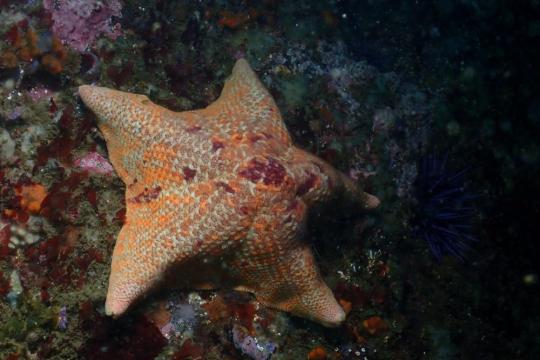
(Image: The star of the discovery, the bat starfish (Patiria miniata) by Olivia Johnson)
If you like what I do, consider leaving a tip or buying me a ko-fi!
152 notes
·
View notes
Text
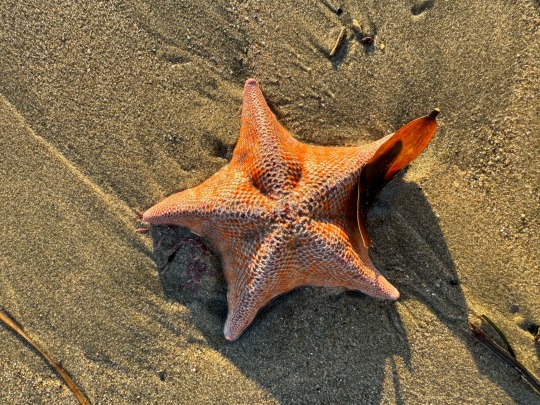
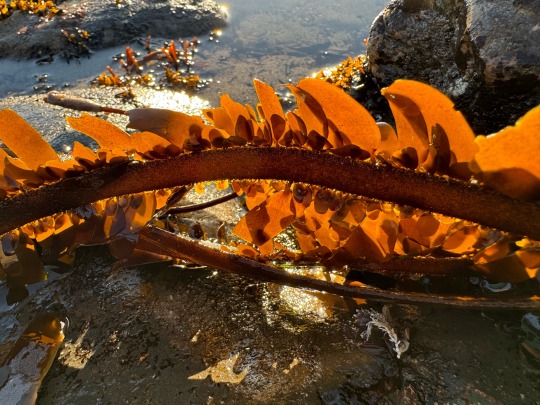



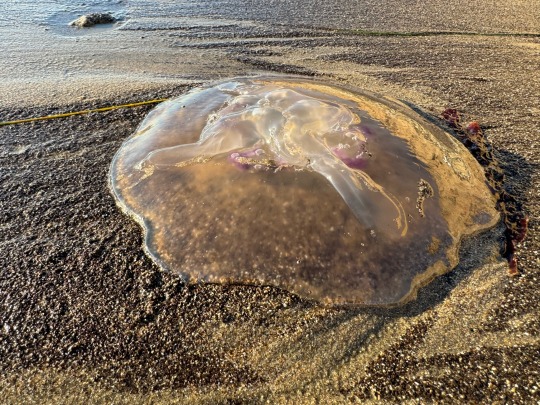
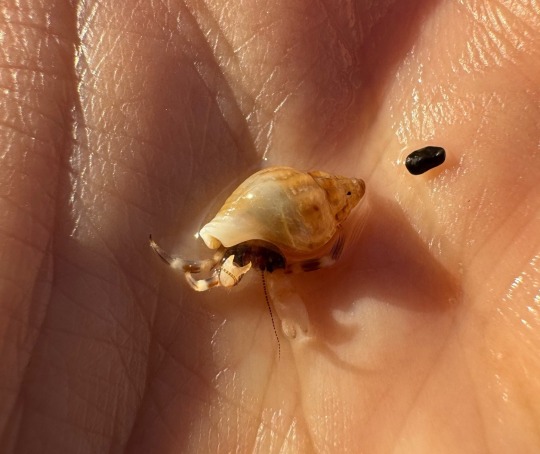
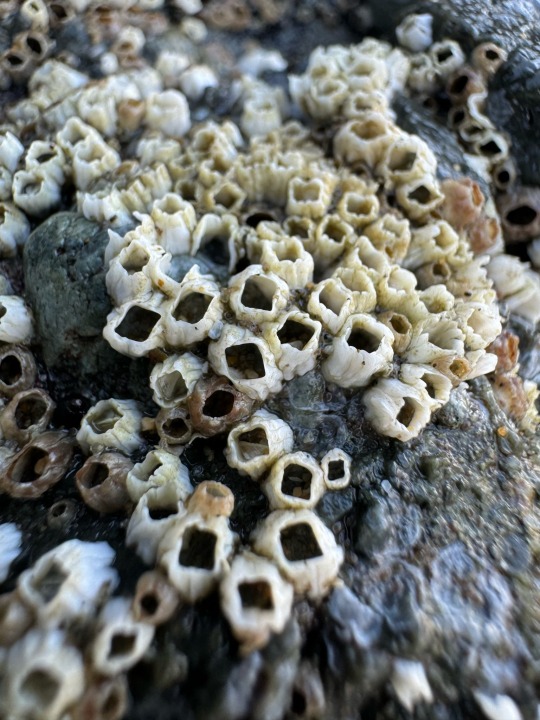
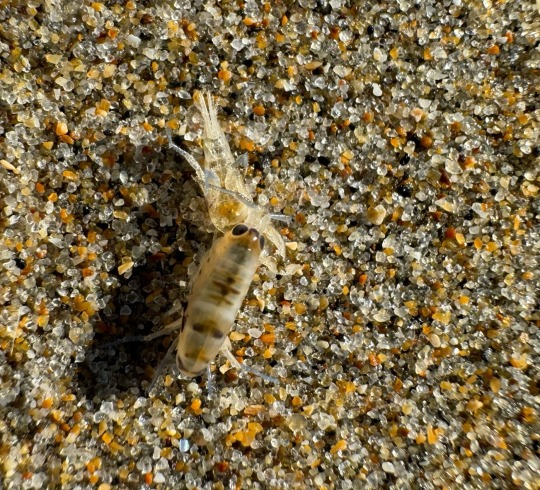

Tide pooling finds north of Santa Cruz. Lots of cool critters <3
Bat star (Patiria miniata)
Feather boa kelp (Egregia menziesii)
Unknown marine isopod
Eelgrass isopod (Pentidotea resecata)
Sunburst anemone (Anthopleura sola) and Corallina
Greater moon jelly (Aurelia labiata)
Hermit crab, likely Pagurus venturensis
Rock barnacles (genus Balanus)
Pale beach hopper (Megalorchestia columbiana)
North American hermit crab (Isocheles pilosus)
#tide pools#tidepooling#beach#santa cruz#route 1#nature photography#nature#bugs#biodiversity#arthropods#inaturalist#starfish#sea star#kelp#isopods#marine life#jellyfish#moon jelly#anemone#hermit crab#wildlife#pacific ocean#ocean#sea#marine biology#shore#barnacles#sand hopper#bugblr#california
116 notes
·
View notes
Text
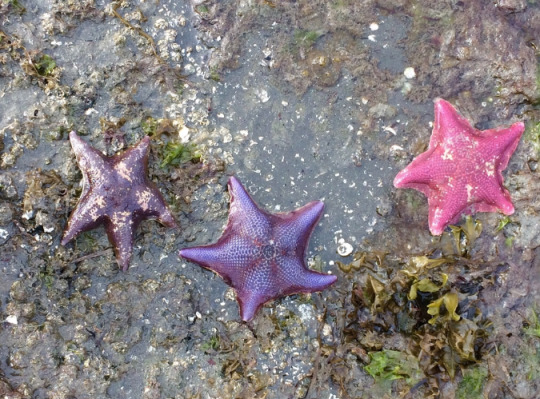
Bat Star (Patiria miniata)
Family: Cushion Star Family (Asterinidae)
IUCN Conservation Status: Unassessed
A small species of starfish found in a variety of habitats across the Pacific coast of North America, the Bat Star is named for the thin membrane that runs between its "arms", which has been compared to the wings of bats. Highly variable in appearance, members of this species are usually red with five arms but may also be yellow, brown, pink, blue or black and have anywhere from 4 to 9 arms, especially after enduring an injury or an awkward regeneration of a lost limb. As with all starfishes a Bat Star's arms are lined with chemical-sensitive cells and small light-detecting organs comparable to crude eyes, and through the use of these organs (as well as the numerous tiny tube-like feet lining their undersides) they crawl slowly along the seafloor in search of algae, carrion and immobile or slow-moving animals; lacking teeth or jaws, they feed by enveloping prey with their arms and then extending their stomachs out of a small mouth in their centre, externally digesting their food and absorbing the nutrients released as a result. Each individual Bat Star is either male or female, and when the waters around them are sufficiently warm females freely release huge number of tiny eggs into the water to be externally fertilized by gametes released by males.
----------------------------------------------
Image Source: Here
#Bat Star#bat star#starfish#starfishes#sea star#sea stars#animal#animals#zoology#biology#echinoderm#echinoderms#wildlife#marine biology#marine invertebrates#invertebrates
17 notes
·
View notes
Text

Two-month old juvenile sea star (Patiria miniata)
Dr. Laurent Formery
21 notes
·
View notes
Text

What is this, you ask? Why, of course, it's the nervous system of a juvenile sea star (Patiria miniata) about 1 cm wide. Labeled with an antibody against acetylated tubulin after optical clearing, and captured using a color-coded Z-projection.
No, but seriously folks, check out the link above for more amazing miniature beauty.
8 notes
·
View notes
Text
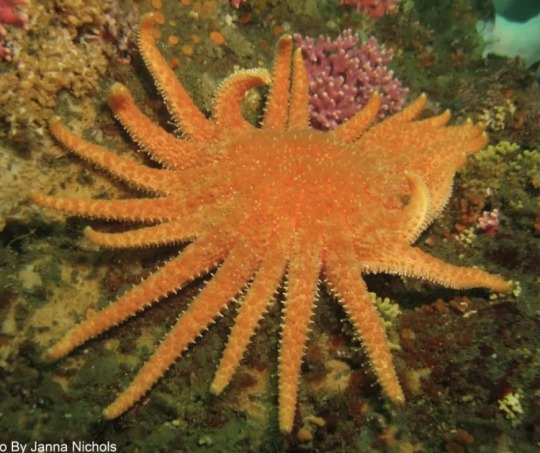
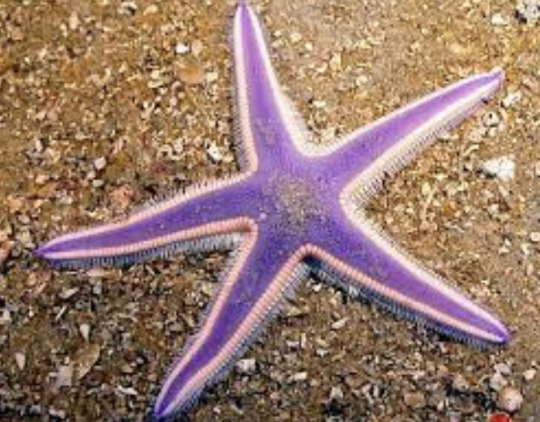


Image 1 : Sunflower sea star - Pycnopodia helianthoides
Fun Fact: As a juvenile, sunflower stars start with five arms and as they grow older they grow up to 24! Σ(・□・;)
Image 2 : Royal starfish - Astropecten articulatus
Fun Fact: Royal stars are carnivores and catch their food with their arms. They even swallow it whole too! (^з^)-☆
Image 3 : Bat star - Patiria miniata
Fun Fact: If two bat stars bump into each other, they will start to look like they're "arm wrestling" in slow-motion (so cute!) ^ ^
September 26 , 2023 (๑>◡<๑)
#marine biology#fun facts#ocean#marine science#ocean life#salt water#scientific names#meow#aqua life#starfish#royal starfish#bat star#sunflower starfish#endangered species
6 notes
·
View notes
Text
Bat Star (Patiria miniata) video set to Caroline Polachek's "Crude Drawing Of An Angel"
31 notes
·
View notes
Text
Art Studio 1 Research: Biology of Slime (IDEA 2) PART 2
Artist Archive (both ideas): Markos Kay's aBioGenesis (2022)
aBioGenesis (2022, CGI-animated short film (57 secs))
vimeo
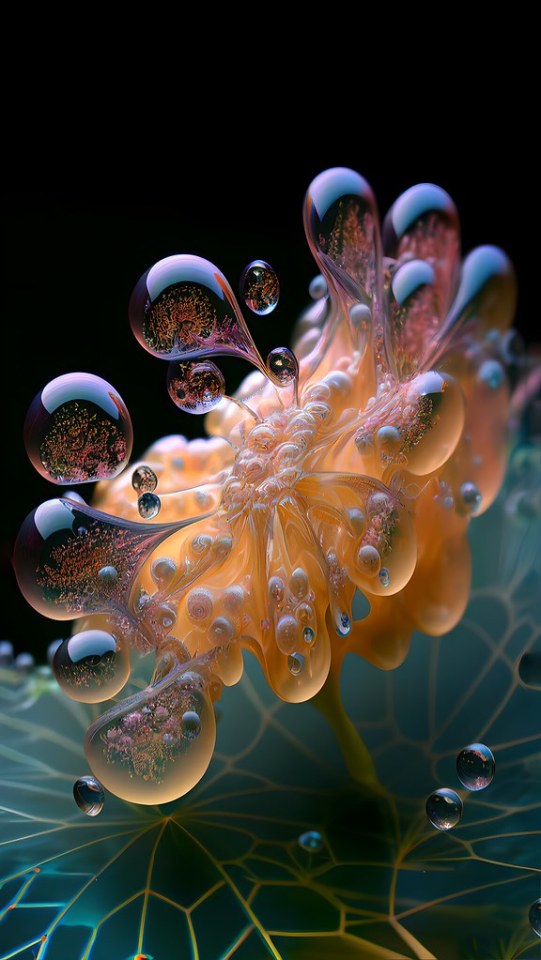

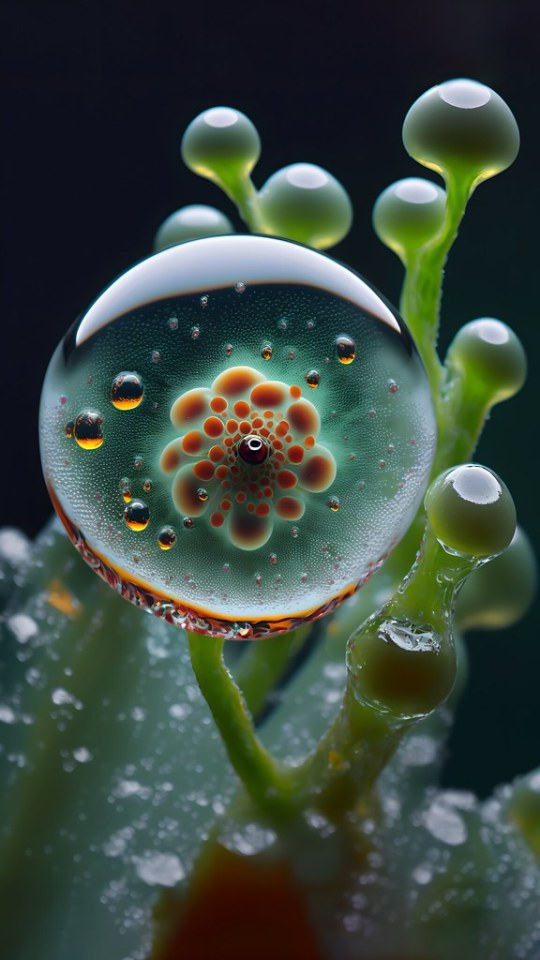
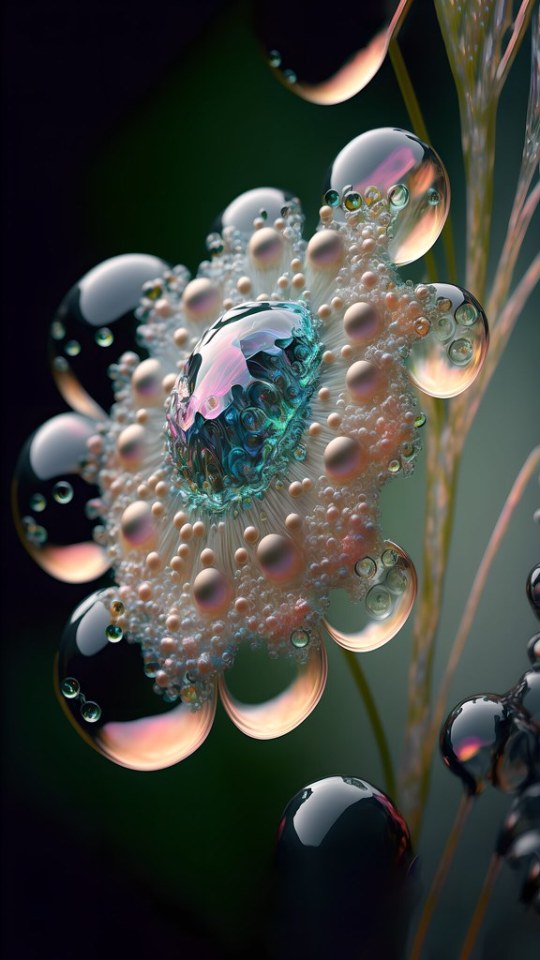
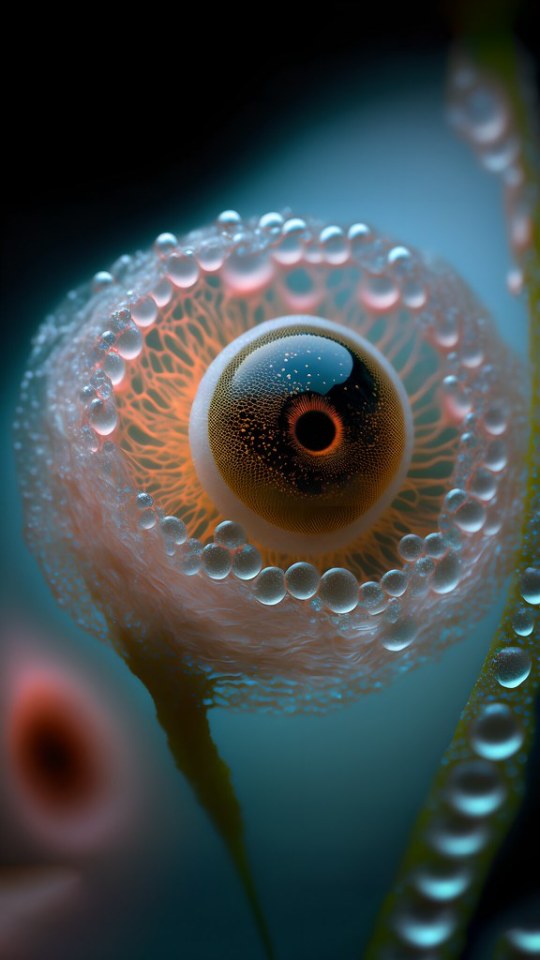

Markos Kay's works exist in between art and biology, in this case creating a visual 'reimagining' of the theory that early cellular life originated from 'primordial lipids'.
Organic forms (droplets, bubbles, vesicles/vacuoles, veins, flowers, cells, etc.) could perhaps influence how my 'slime-inspired work' may look (abstract?).
Abstract/biomorphic animation is definitely something I may use for my own work.
Artist Archive (both ideas, but primarily idea 2a): Aron Sanchez-Baranda
1st Row (left to right) - photographic prints: Fundament, Pisaster ochraceus/Anthopleura xanthogrammica (2021), Hair, Gum and Blood, Stemonitis sp. (2019), Febrile, Urticina eques (2021)
2nd Row (left to right) - short film screencaps: Take me to your heart, Phoca vitulina birth remnants (2017), Higher class tissue, Octopus rubescens (2021), Proportion dependent, Anthopluera sola (2023)
3rd Row (left to right) - short film screencaps: Cell wall, Aplysia californica (2023), World entire, Anthopluera sola (2023), Transactive memory, Anthopluera sola under UV light (2022)
4th Row (left to right) - short film screencaps: Lap, Neverita lewisii (2021), Cooperation offer, Ophiodromus pugettenis lives within patiria miniata (2022), Sparkling reflective stacks of purine crystals, Flabellinopsis iodinea (2023)

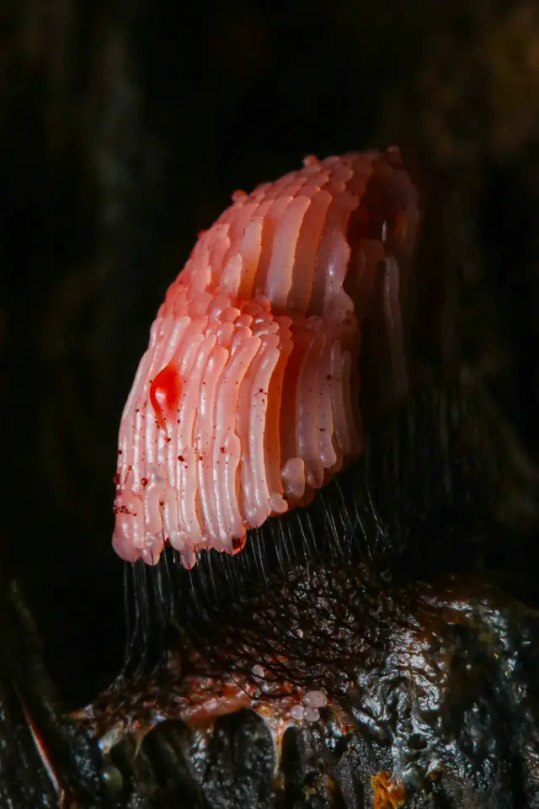
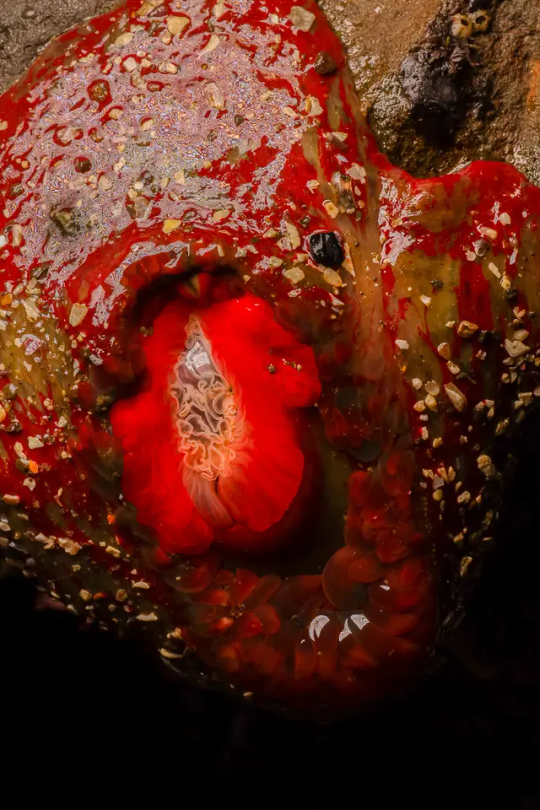

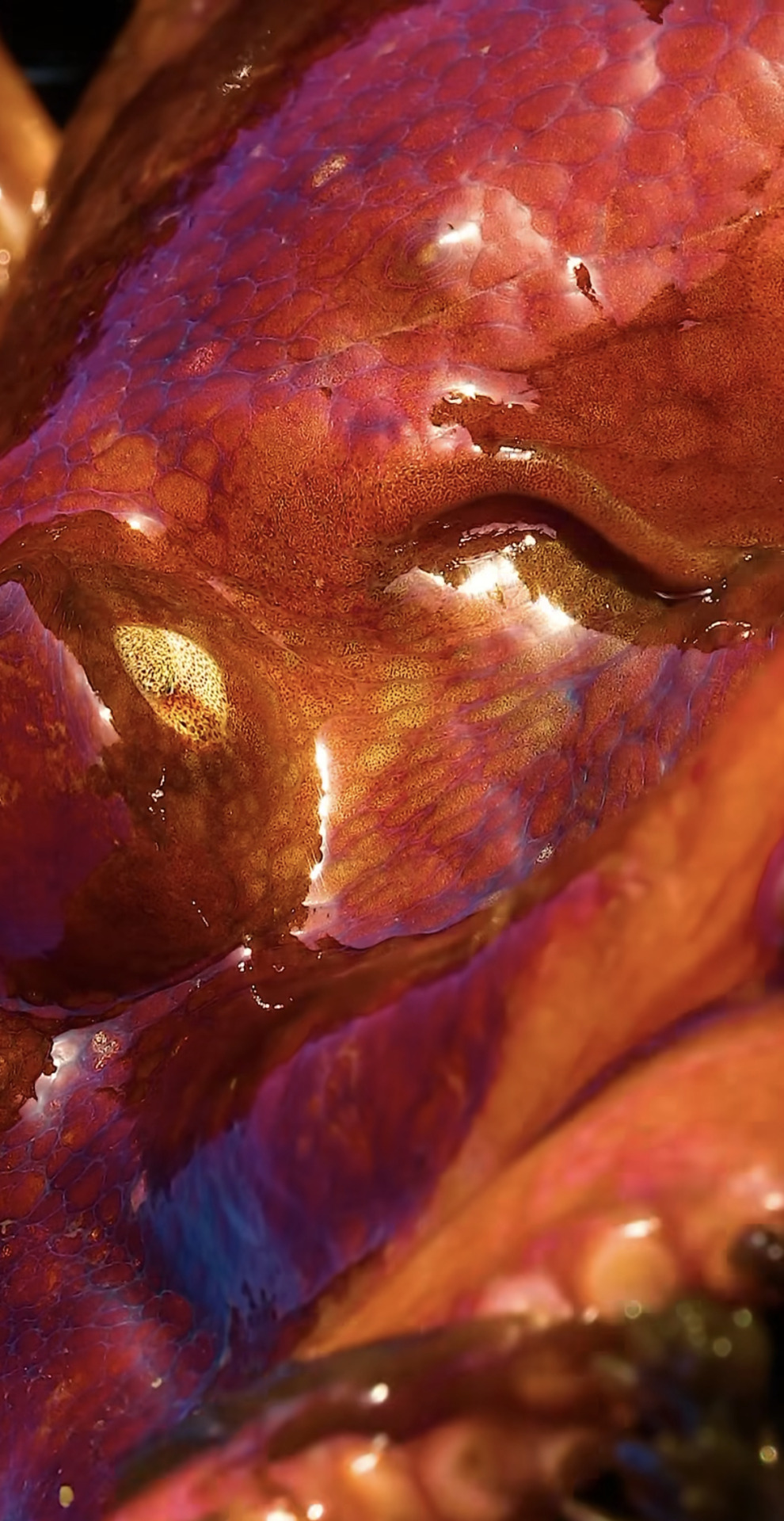







Aron Sanchez-Baranda's photographs and films exist as both documentation and art.
His close-ups of fungi and marine wildlife abstract the natural forms of the subject, focusing on the colours, the patterns, the shapes and textures interacting with each other, and the glistening water, mucus, etc. of their surfaces.
This may perhaps play into the natural vs. unnatural, familiar/comfortable vs. repulsive?
Artist Archive (both ideas, but primarily idea 2b): Anicka Yi's tempura-fried flower sculptures and artificial honeycomb lamps
1st Row (left to right): Maybe She's Born With It (2015), ALZ/AZN (2015), Lapidary Tea Slave (2015)
2st Row - tempura-fried flower sculptures: Installation shot of all three sculptures listed about

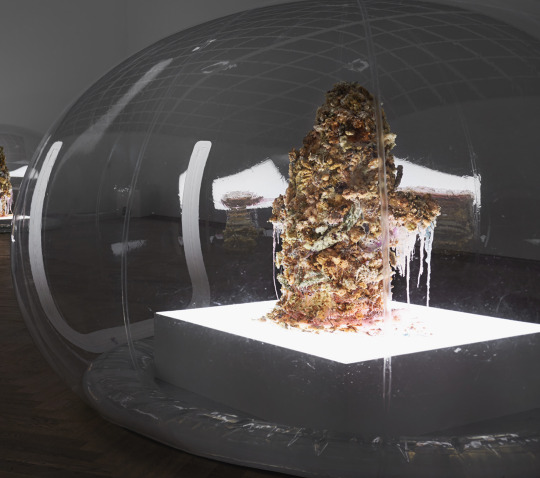
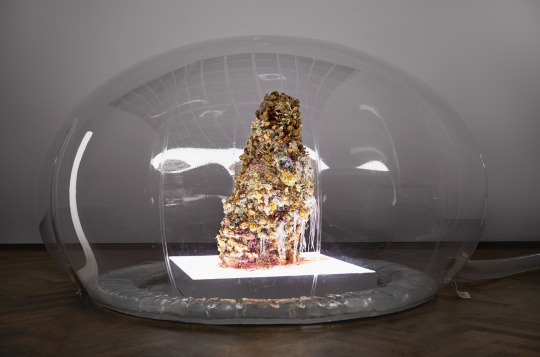
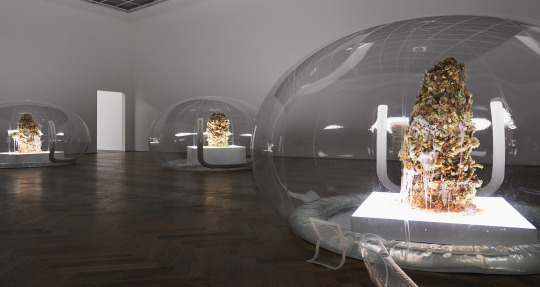
1st Row (left to right) - artificial honeycomb (epoxy resin) lamps: Escape From The Shade 1 (2016), Escape From The Shade 7 (2016), God Make It This Time Or Never At All (2017)
2nd Row (left to right) - artificial honeycomb (epoxy resin) lamps: Mausoleum Of Easy Going (2017), Slippage Between Law and Art (2022), One Bright Pearl (2022)
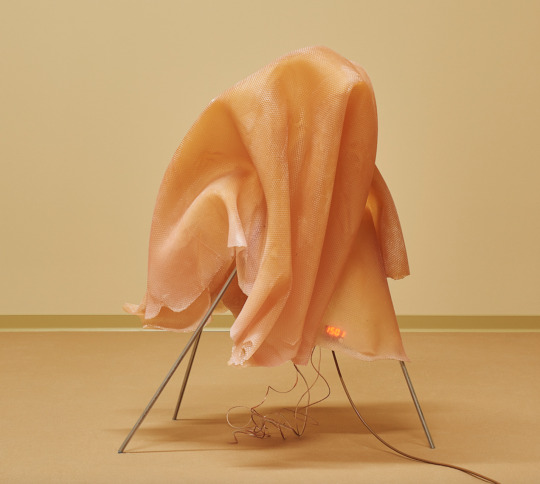
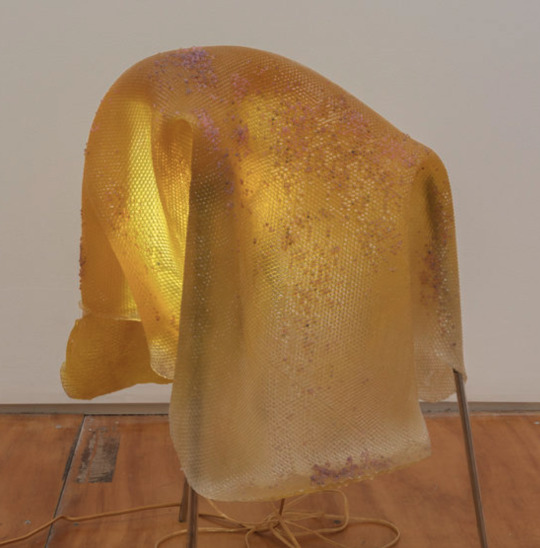
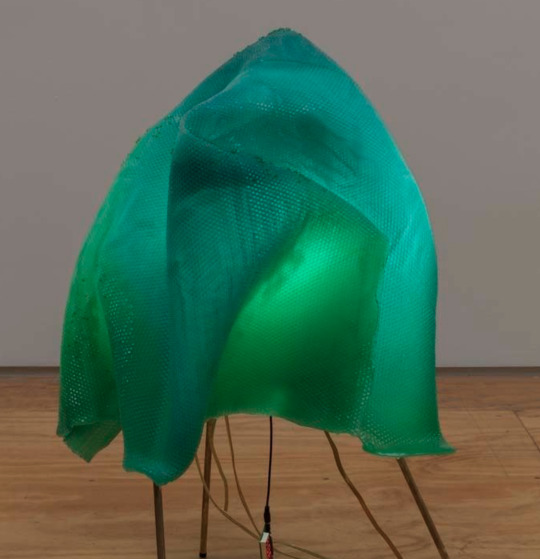
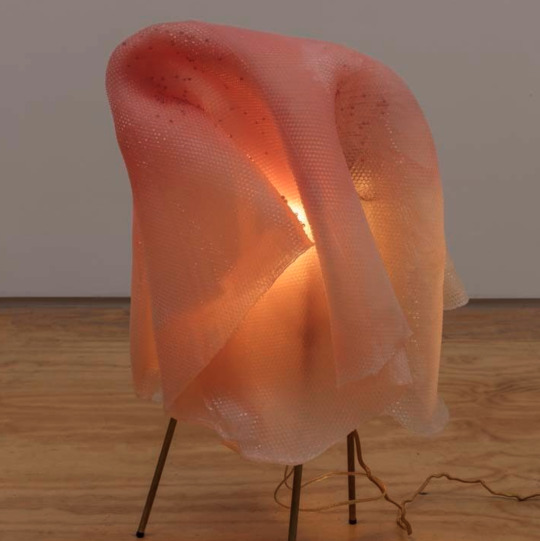
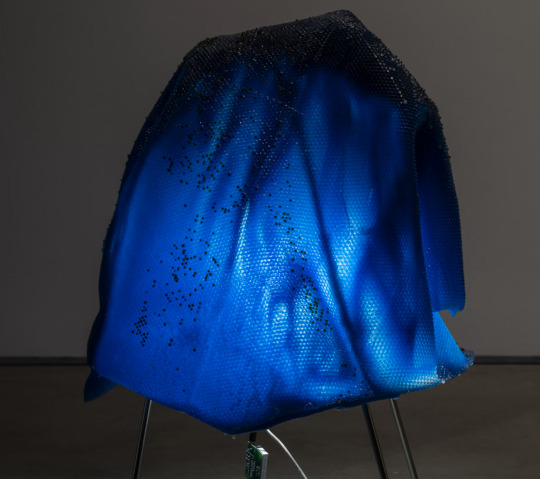

Anicka Yi is another artist who explores biology and art, but more within the context of sensory immersion and how it may trigger emotional responses.
In the case of her tempura-fried flower sculptures, the strong smell of oil, tempura batter and decaying plants exudes from a hybrid between crystallised and molten/dripping forms (interesting to play with both shape/texture and smell).
As for her artificial honeycomb lamps, she transforms the 'honeycomb' into a 'draping cloth' while maintaining its texture and translucency - with colours ranging from softer and more natural to more vibrant and emotive (perhaps textured sculptures and light/colour for a tangible, interactive form?).
0 notes
Text
Fwd: Job: CarnegieMellonU.Bioinformatics
Begin forwarded message: > From: [email protected] > Subject: Job: CarnegieMellonU.Bioinformatics > Date: 15 February 2024 at 05:57:24 GMT > To: [email protected] > > > > Echinobase is hiring. > Applications will be accepted until we fill the position so apply > immediately. > > Application Instructions > Applications, including a cover letter, curriculum vitae indicating > your interest should be submitted electronically via Interfolio at > https://ift.tt/WYdEX9t. > > Veronica Hinman is a PI on a newly renewed NIH grant that funds an > international team to develop Echinobase (Echinobase.org), a community > resource for echinoderm genomic research. The Department of Biological > Sciences at Carnegie Mellon University is seeking candidates for a > full-time Senior Bioinformatician to improve the contiguity and accuracy > of echinoderm genome assemblies, enhance the annotation of gene models > through orthology mapping, improve Gene Ontology and integration > with external sources and process bulk RNA-seq data for subsequent > use in viewing phenotypes and relative expression across multiple > species. Opportunities for independent projects are available depending > on interest and experience. Opportunities to teach and mentor students > are also available depending on the candidate's interests and experience. > > Responsibilities will include: > - Continued integration (full or partial) of community-provided > assemblies. > - Improving the assembly and annotations for existing genomes (e.g. > Patiria miniata). > - Enhance the functional annotation of genomic elements and datasets. > - Automated merging of multiple genome annotations. > - Addressing many:X homology relationships by considering orthogroups. > - Whole-proteome ontology analyses of supported species (e.g. PFAM, > InterPro). > - Coordination of external resource integration (e.g. UniProt, AGR, > PhylomeDB). > - Deployment of SRA / GEO pipeline for gene expression visualization. > - Compute ???Expression Phenotypes??? to be provided to Curate > for the ECAO. > - Process and prepare single-cell data for visualization across > multiple species. > - Implement UCSC cell browser to browse single-cell datasets. > > Flexibility, excellence, and passion are vital qualities within > MCS. Inclusion, collaboration, and cultural sensitivity are valued > competencies at CMU. Therefore, we are in search of a team member who is > able to effectively and professionally interact with a varied population > of internal and external partners. We are looking for someone who shares > our values and who will support the mission of the university through > their work. > > Qualifications > - PhD degree in computational biology, bioinformatics, evolutionary or > developmental biology or related fields is required. > - An interest in echinoderm genomics. > - Ability to summarize and communicate technical information in a clear, > concise manner to multiple audiences. > - Ability to publish computational and biological results in peer- > reviewed journals. > - Ability to work with an international team on the development of > tools. > - Compensation will be commensurate with experience. > > The Mellon College of Science (MCS) is home to four departments and > many programs and research centers that cross disciplines. We approach > scientific problems from fresh angles using creative interdisciplinary > approaches while drawing on our departmental strengths in the core > sciences. MCS faculty members are nationally and internationally > recognized for their research in various fields, including molecular > and cellular biology and genomics. > > Cheryl Telmer
1 note
·
View note
Text
Deniz Yıldızının Sinir Sistemi
Deniz Yıldızının Sinir Sistemi Mikroskop üreticisi Evident, her yıl düzenlediği Bilimsel Işık Mikroskobu Ödülü’nü bu yıl deniz yıldızının (Patiria miniata ya da yarasa yıldızı) sinir sistemi çalışması ile ABD’den Laurent Formery’ye verdi. 1 cm boyutlarındaki örnek, önce antikor ile işlem gördü daha sonra yapay olarak boyanarak en ince detaylarına kadar görüntülenmesi sağlandı. Yazan: Selim…
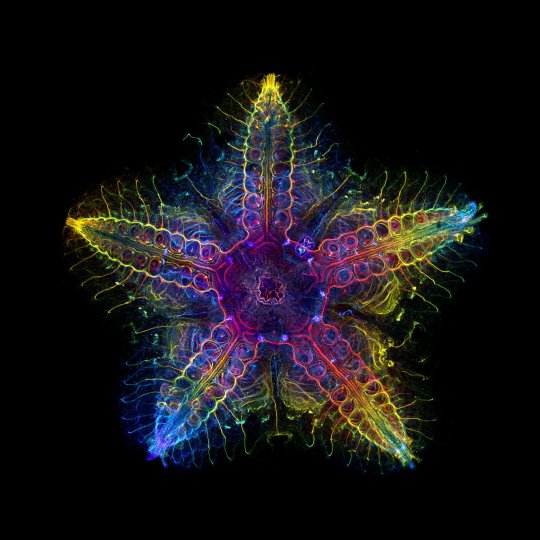
View On WordPress
0 notes
Text
Nel corso della loro evoluzione le stelle marine hanno perso il corpo per diventare solo testa
L’insolita simmetria a cinque assi delle stelle di mare (Patiria miniata) ha a lungo confuso la nostra comprensione dell’evoluzione animale. Per secoli i naturalisti si sono interrogati su cosa potesse costituire la testa di una stella di mare, comunemente chiamata “stella marina”. Quando si guarda un verme o un pesce, è chiaro quale sia l’estremità della testa e quale quella della coda. Ma con…

View On WordPress
0 notes